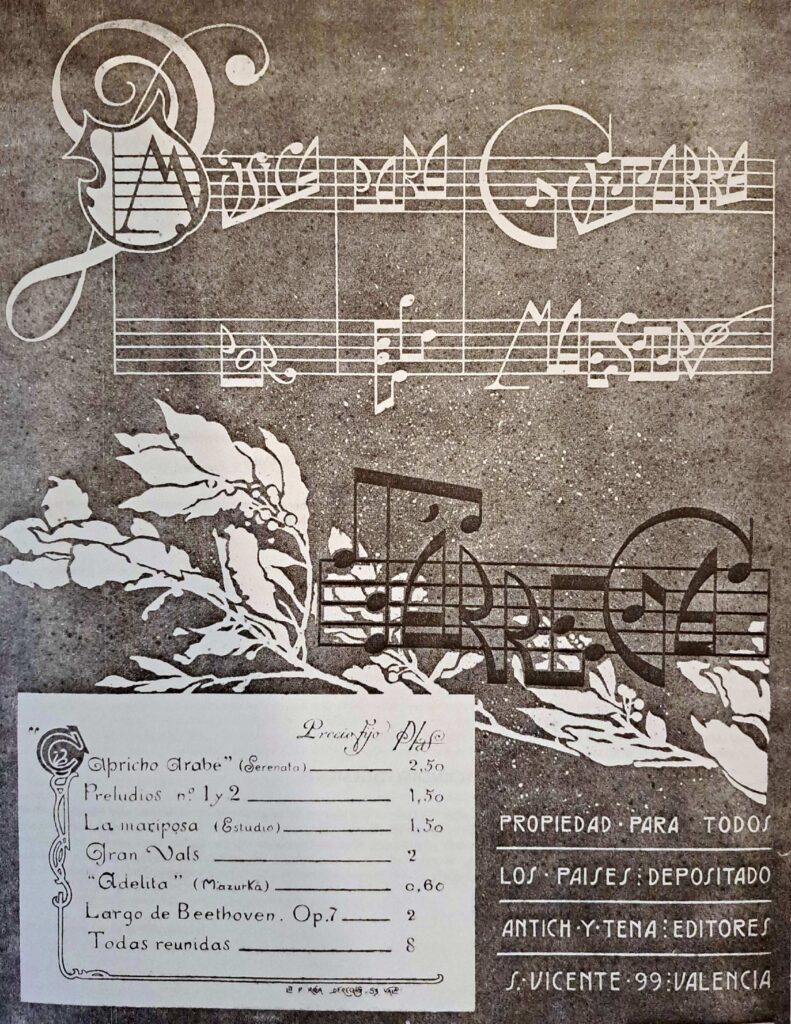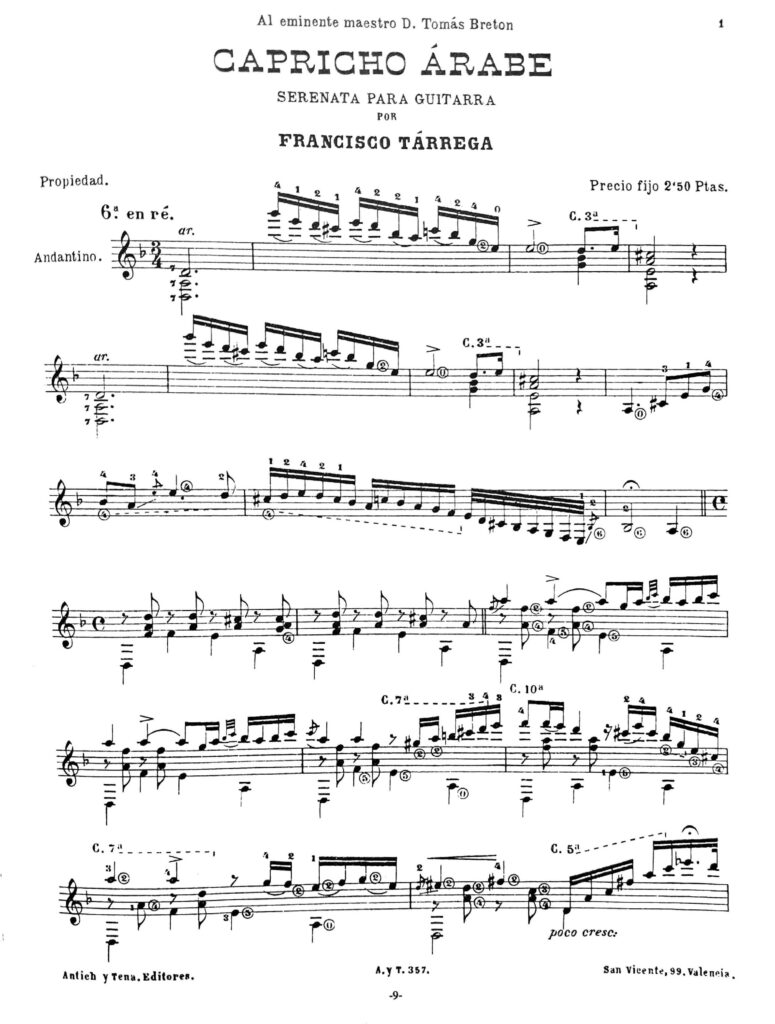Capricho Árabe is a popular classical guitar composition that has been performed and recorded by many guitarists. Francisco Tarrega (1852-1909) composed it sometime in the 1880s, and it was first published in 1902.
The full title is Capricho Árabe: Serenata para Guitarra and it is dedicated to Tomás Bretón. Bretón was a composer whose output included opera, orchestral music, and Zarzuela (Spanish light opera).
Capricho Árabe is written in a European style meant to evoke images and sounds of the Arabic world and the Andalucian region of Spain. Two other well-known compositions by Tarrega in this style are Danza Mora and Recuerdos de la Alhambra.

Serenada
While it is a stretch of the imagination to think of the melody to Capricho Árabe being performed by a singer on the stage of a Zarzuela performance, complete with costumes and scenery, the melody should be approached as a vocal melody and the guitarist must coax the guitar to sing the melody. Personally, I find the image of costumed singers performing the melodies helpful to bring out the expressive vocal qualities.
In more technical terms, it is important to play the melodic notes with a clear a beautiful tone, to play the melody legato most of the time, and to play the accompanying notes softer so that they are heard clearly as background. A guitarist can then use dynamics, rubato, and articulation to give the melody expressive and singing qualities.
Capricho
The form of the composition justifies the word Capricho in the title. Usually found in the Italian spelling Capriccio, both spellings describe music that is both lively and loosely structured.
While the term Capricho implies an animated and lively tempo, in this composition the subtitle Serenata implies a calmness that trumps the liveliness implied by the first word in the title. Capricho Árabe lives up to the expectation that a Capricho (or Capriccio) be written in a formal structure that is a not sonata, nor a fugue, nor a stylized dance, etc. Rather the form is unique to the composition and gives the impression that the structure is whimsical and fanciful, although it does have its own logic and order.
The most striking formal feature of Capricho Árabe is that the melody keeps returning in new guises, and in different keys. The melody is presented first in a minor key (D minor, measure 15) and it returns in both the relative major (F major, measure 35) and parallel major (D major, measure 45) before returning in the original minor key (D minor, measure 63).

Árabe
The compositional devices used in Capricho Árabe to evoke images Arabic world and Andalucía include modal inflections such as the use of the flatted second scale degree (E flat) in measures 20 and 23, and figures in an arabesque style. The arabesque style is exemplified by the ornamental figures in the melody, such as at the end of each measure in measures 15 through 20, and an extended ornamental figure at the end of measure 21.
Josefina Robledo Recording
Robledo was a student of Tarrega and recorded a number of his compositions in the 1940s and 1950s. While the recordings were made many years after her studies with Tarrega and after her prime performing years, they nonetheless offer in glimpse into how Tarrega instructed his students to play his music. Here is her recording of Capricho Árabe: https://www.youtube.com/watch?v=dyJxe0V6cqg
